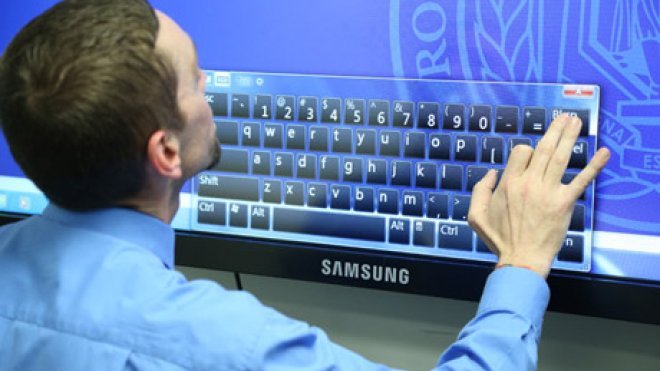Ed Tech Partnership with Samsung Promotes Collaboration, Cost-Savings via Cloud Computing
New technology enhances collaborative learning, cutting-edge skills in the classroom and beyond

BRISTOL, R.I. – As the technology landscape continues to evolve and outpace many institutions, a partnership with Samsung Electronics America, Inc., has catapulted Roger Williams University to the head of the class via a virtual desktop infrastructure (also known as the rCloud) that mirrors – and in some cases exceeds – the professional environment that students can expect to encounter upon graduation. In a matter of months, the first phase implementation of this multi-year educational technology initiative has enhanced collaborative learning and reduced technology costs to students working in technology-intensive programs as the University continues to set new standards for “affordable excellence” in higher education.
“Students are getting cutting-edge skills that are now more advanced – in many cases beyond that of their employers,” University President Donald J. Farish says. “They’ll have technological expertise that we believe will lead them to being preferentially hired. The Samsung technology works both in terms of cost and in preparing students well to lead in their careers. It fits perfectly into our commitment to Affordable Excellence.”
Currently, the virtual desktop infrastructure is available to students in the School of Continuing Studies and the School of Architecture, Art and Historic Preservation, where each student workstation is outfitted with a 27-inch LED monitor and anytime access to critical design software and advanced applications (including AutoCAD, Revit and Adobe Creative Suite, among others) via the rCloud. In addition, 65-inch interactive whiteboards adorn meeting areas, yielding greater interaction among students and faculty in both schools.
“In architecture, and probably more so in design, being able to collaborate is extremely important,” says graduate student Jennifer Shore. “Being able to use the cloud is an extreme asset because it saves me time in my renderings, which really allows me to hone in on what is working in my design and what isn’t.”
SAAHP Dean Stephen White estimates that design time has significantly improved thanks to the enhanced technology – what once took students 18 to 20 hours to complete now takes about 20 minutes. And more than just saving time, students are saving money.
“What’s really beneficial about it is that any computer with an Internet connection can log onto the cloud,” says Christopher Winkler ’13M. “It’s great, because people aren’t buying $2,000 laptops now – they’re buying a $500 laptop and they have all of the power, even greater than what a $3,000 desktop would hold.”
Access to the most up-to-date software via the rCloud will also help students save up to $8,000 over the course of their education, Farish notes, as well as provide a better learning experience that is collaborative and engaging.
In the School of Continuing Studies, students are experiencing the unifying power of this new technology firsthand according to Interim Dean Jamie Scurry. For years, continuing education students have often worked in isolation, she says. Now, they can be connected as a cohesive team regardless of their learning location – including military students taking classes from overseas.
“The Samsung Collaborative Learning Lab is a key component of the culture we are building here, centered around engagement and collaboration,” Scurry says. “It can bring together a student who’s sitting on an aircraft carrier and a student who’s sitting in Providence in a way that’s meaningful, authentic and engaging.”
Roger Williams is one of the first universities nationwide to implement this advanced technology program, according to Dean White, and with early outcomes proving positive, plans to expand the initiative campus-wide by 2015-16 are underway.
“This has been implemented in only a few places in the profession or in higher education to date,” according to White. “But we knew that this could provide our students with broad access to high-quality computing – giving them a competitive advantage as they entered the profession, and also put us well ahead of other universities.”